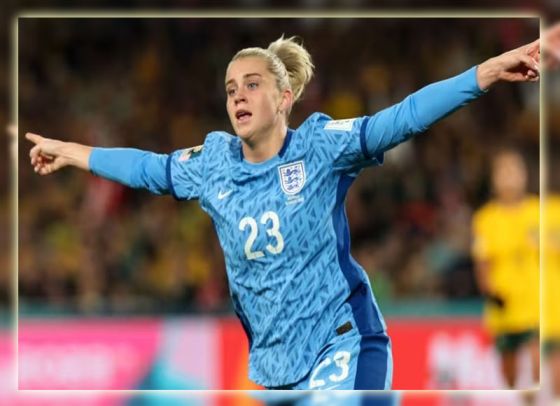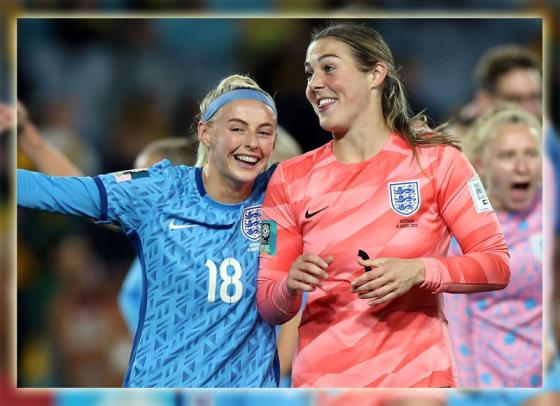Explore England’s journey in the World Cup final against Spain. Witness their adaptability, tactical shifts, and the test of resilience on the grand stage of women’s football.

READ THIS: Liverpool’s Bid for Cheick Doucoure: Crystal Palace Star in £70M Deal Talks
England had effectively plugged gaps and addressed shortcomings. They exhibited adaptability, altering strategies, formations, and even personnel to reach their first-ever World Cup final. But England’s journey took another turn.
Trailing 1-0 at halftime during the World Cup final, Sarina Wiegman made a decisive move. The once-revelatory 3-5-2 formation, which had reshaped England’s approach in the tournament, was abandoned in favor of the 4-2-3-1 setup. The wing-backs were replaced by wingers, and the pressing style against Spain was relinquished.
With this shift, a new dynamic emerged. For the first time in the World Cup, the Lionesses struggled to find the necessary adjustment. Although James and Kelly brought moments of improvement, England’s most potent offense was previously linked to Lauren Hemp and Russo as a forward pair. Hemp’s move to a central role diminished the threat that had been omnipresent in the first half, forcing Wiegman to search for alternatives. Beth England entered the field, and Millie Bright advanced, but this challenge proved insurmountable.
Throughout the tournament, England had been lauded for their capacity to adapt and overcome obstacles. However, the adjustments required against Spain proved too extensive. Mary Earps’ penalty save provided a glimmer of hope, but the final stumbled, failing to find a rhythm in the second half. Stoppages played into Spain’s hands, masking defensive vulnerabilities that had been evident earlier in the tournament.
Wiegman believed the changes improved England’s balance, yet the game’s context had shifted. In the closing moments, Spain maintained control while England struggled to forge effective combinations. Neither of the two systems England played fully materialized at the right juncture.
Perhaps this outcome was inevitable, stemming from challenges that arose well before the tournament’s kickoff. From Beth Mead’s ACL injury to subsequent losses of Leah Williamson and Fran Kirby, England’s consistency faltered. This deflating conclusion highlighted the absence of the same cohesion that defined their Euro campaign last summer. Winning the final proved beyond their remarkable resilience.

READ THIS: Rashford’s Preferred Position and United’s Attacking Puzzle: Left-Wing vs Central Role Dilemma
This might also signify a rebalance from the previous summer’s quarter-final, where Spain outperformed England but succumbed to a moment of brilliance. England’s attempt to replicate that magic fell short. Despite the introductions of Kelly and James, England’s threat peaked in a frenetic, open match. This approach made them more susceptible defensively and ultimately led to Olga Carmona’s match-winning goal.
Spain’s victory crowned their golden generation—a team of sharp minds and skilled passers. Aitana Bonmati shone as the standout player, poised for a Ballon d’Or accolade. While Spain displayed excellence, the regret lies in England’s lack of tactical influence from their head coach Jorge Vilda.
England played into Spain’s hands. Wiegman’s bold strategy challenged Spain but also strained England. They pressed high, hoping to exploit mistakes, with Lucy Bronze and Rachel Daly assuming forward as well as winger roles. However, Spain countered adeptly, transitioning through England’s lines and exposing defensive vulnerabilities.
Bronze’s adventure led to Spain’s goal. As Carmona scored, Bronze collapsed, symbolizing the goal’s origin. It was a moment that underscored the need for quicker passing instead of audacious runs. With England outnumbered, Carmona exploited a gap England couldn’t close.
The balance was delicate; the first goal crucial. Although the match began goalless, England’s high press and channel attacks created chances. But Spain’s goal altered the landscape. England’s space evaporated, prompting Wiegman to adapt, even if it meant sacrificing unpredictability. Making it to this stage was a testament to England’s approach and mindset, but on the grandest stage, they fell short.
Read More: